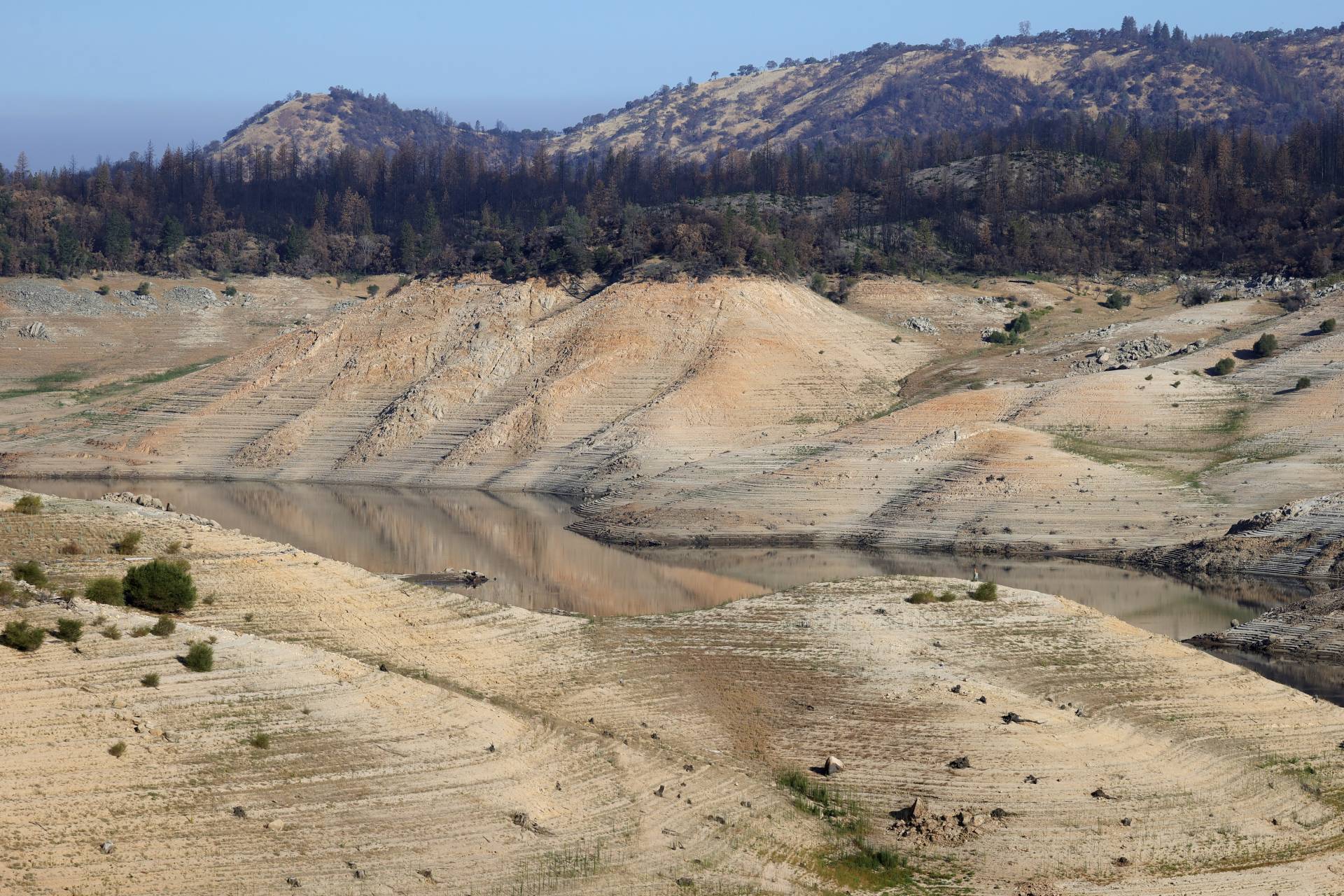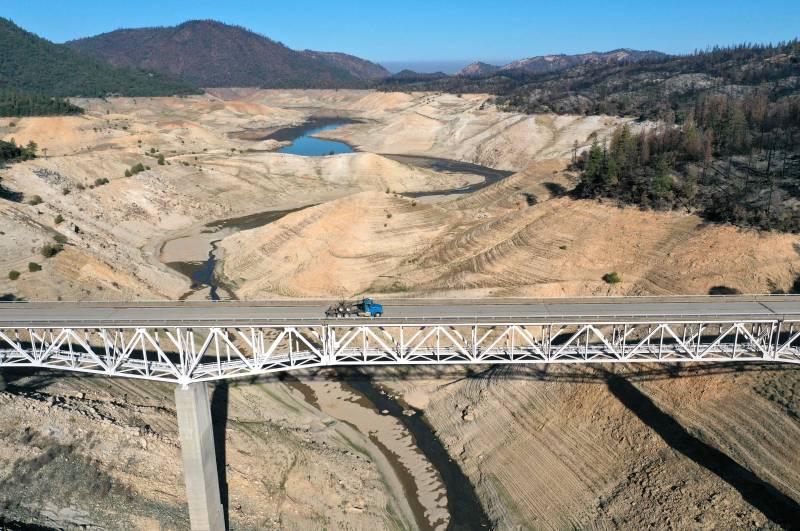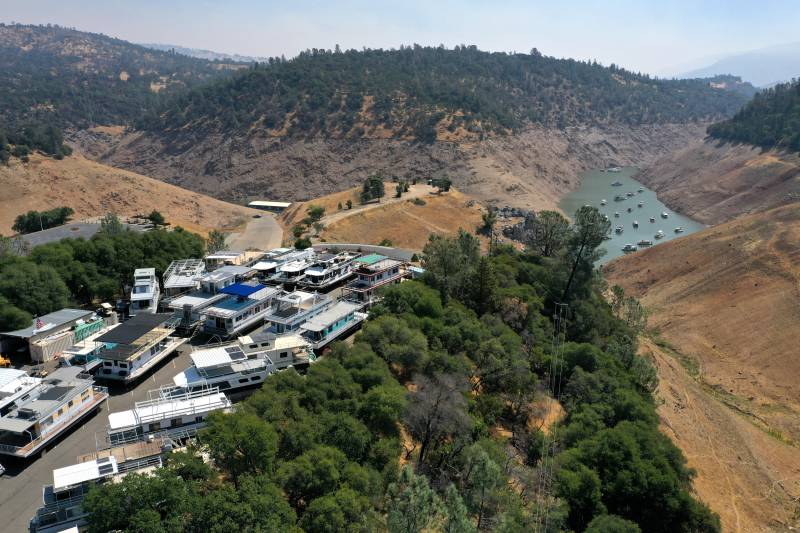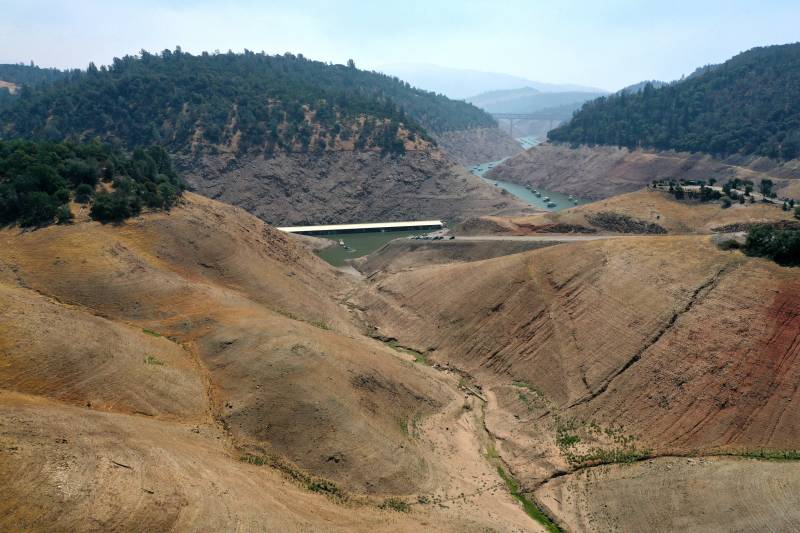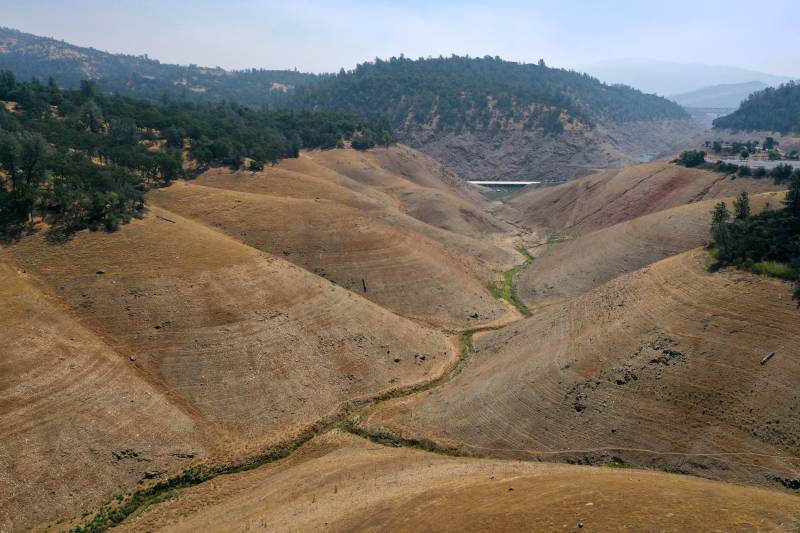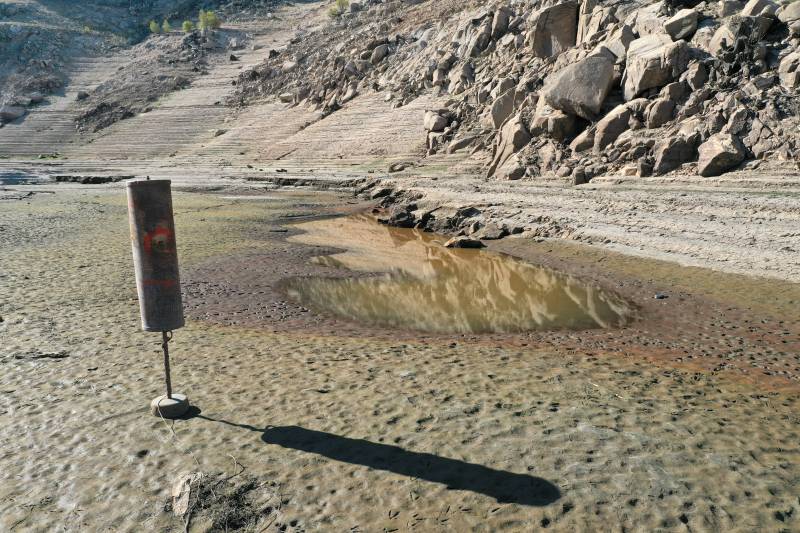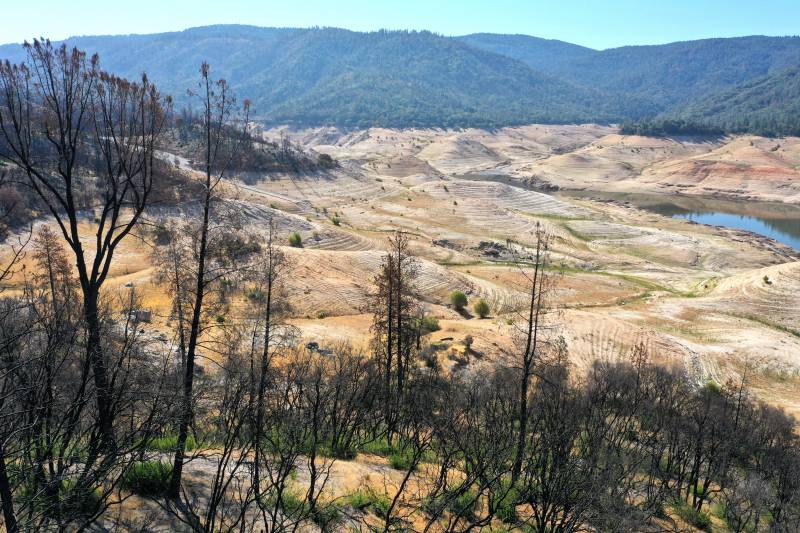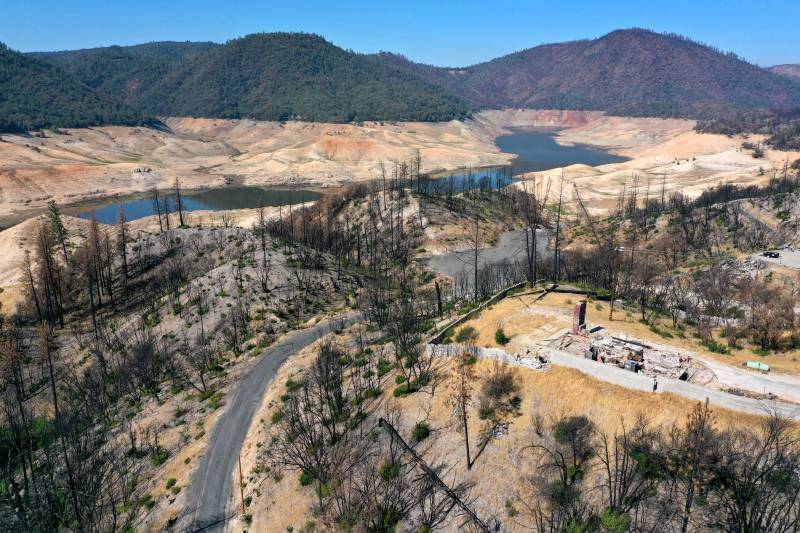Updated July 24, 2021, to correct the elevation of Lake Oroville's all-time low in 1977.
C
alifornia has descended deep into one of the worst droughts in its recorded history. And perhaps no single location shows more starkly how deep that really is than Lake Oroville, the state's second-largest reservoir and a crucial source of water supply for the state's farm and city water users alike.
San Francisco-based Getty Images photographer Justin Sullivan has been visiting the lake off and on since the driest days of our last severe drought, in 2014.
"Lake Oroville provided the most stunning and visible evidence of loss of water" during that five-year drought, Sullivan said in an interview with KQED Friday.
It's the same now, with much of the reservoir's shockingly barren floor exposed. Adding to the effect around parts of the lake: the charred skeletons of trees burned during last summer's North Complex fires.
Sullivan visited the lake in April and again this week. While the lake's appearance in the spring was riveting, it's alarming now. "To be able to show the difference, actually show it, I think is important because a lot of people still don't view this as anything being wrong," he said. "I thought the last drought was bad, but I'm kind of fearful of what this is."
